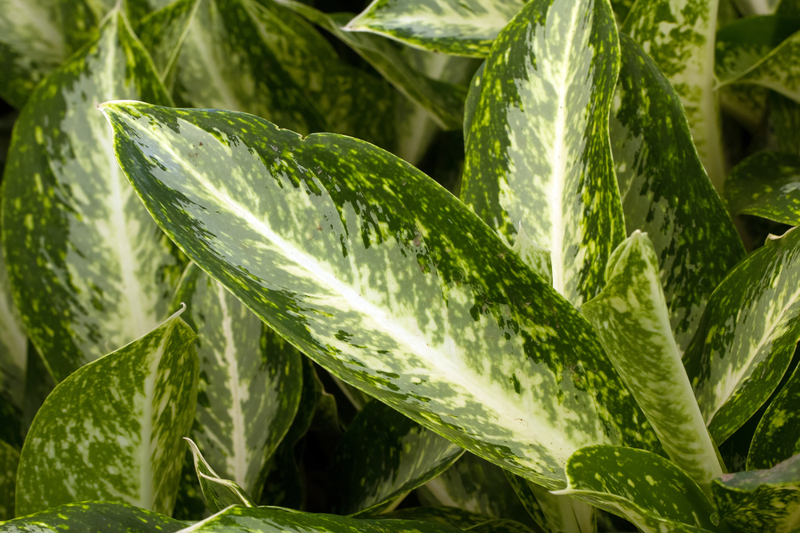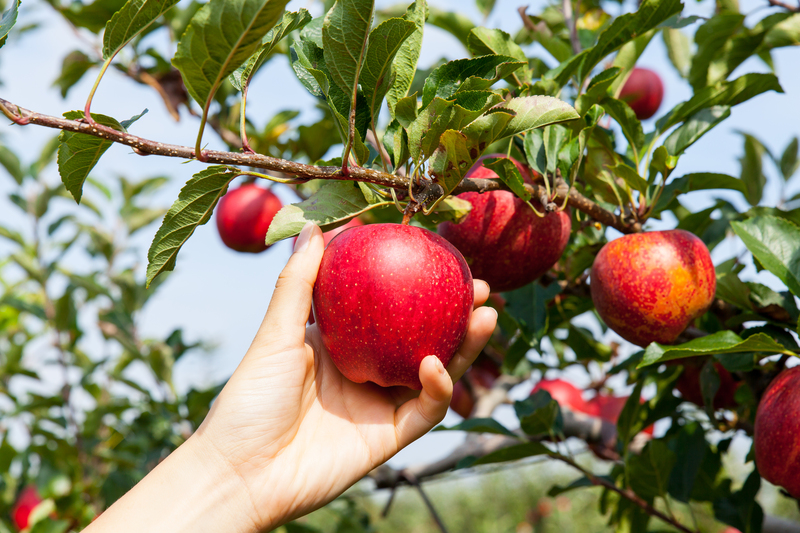Creating Lush Landscapes with Waste-Derived Soil Nutrients
Posted on 03/06/2025
Creating Lush Landscapes with Waste-Derived Soil Nutrients
In a world where sustainable landscaping practices are becoming crucial for environmental well-being, the use of waste-derived soil nutrients stands out as a transformative approach. By converting organic waste into rich soil amendments, home gardeners, landscapers, and municipalities alike can create lush, resilient landscapes while dramatically reducing their ecological footprint. In this guide, you'll discover the science behind waste-derived fertilizers, practical techniques for incorporating them, and ways to maximize plant health and garden beauty.
Understanding the Power of Organic Waste in Landscaping
What Are Waste-Derived Soil Nutrients?
Waste-derived soil nutrients refer to essential minerals and organic compounds reclaimed from biodegradable materials--such as food scraps, yard trimmings, manure, and agricultural byproducts. Instead of ending up in landfills, these materials are processed through composting, vermiculture, or anaerobic digestion, and returned to the soil as potent fertilizers.
- Compost: Decomposed organic matter rich in nitrogen, phosphorus, and potassium (NPK).
- Biochar: Charred plant material that enhances nutrient retention and soil structure.
- Manure-Based Amendments: Nutrient-rich byproducts from livestock, carefully processed to ensure safety.
- Liquid Fertilizers: Extracts or teas made from compost, manure, or plant residues.
Advantages of Using Organic Waste for Soil Nutrition
Utilizing waste-derived nutrients for landscaping delivers numerous benefits beyond reducing landfill loads:
- Eco-Friendly: Reduces greenhouse gas emissions by diverting organics from landfills where they produce methane.
- Soil Health: Improves soil structure, water retention, and microbial diversity.
- Budget Conscious: Cuts fertilizer costs while boosting fertility with materials already on hand.
- Plant Vitality: Promotes robust plant growth, disease resistance, and vibrant blooms or foliage.
- Sustainable Cycles: Closes the nutrient loop, returning essential elements to the earth.

Key Nutrients Delivered by Waste-Based Fertilizers
Waste-derived soil amendments are nature's slow-release fertilizers, providing balanced macro- and micronutrients essential for thriving landscapes:
- Nitrogen (N): Vital for leafy green growth and plant vigor.
- Phosphorus (P): Supports root development and flowering.
- Potassium (K): Regulates water metabolism, drought tolerance, and overall plant health.
- Calcium, Magnesium, Sulfur: Important secondary nutrients also supplied in varying amounts.
- Micronutrients: Iron, manganese, zinc, copper, boron, and others present in traces for healthy metabolism.
How to Transform Waste into Landscape-Boosting Nutrients
Composting: The Cornerstone of Waste Enrichment
Composting is the most accessible and common method to convert organic refuse into nutrient-rich soil amendments. By carefully managing carbon-rich ("brown") and nitrogen-rich ("green") materials, you accelerate decomposition and produce dark, crumbly compost for your gardens.
Steps to Successful Composting:
- Collect Materials: Gather fruit and vegetable scraps, coffee grounds, eggshells, grass clippings, dead leaves, and shredded cardboard.
- Balance Carbon to Nitrogen: Aim for about 2:1 ratio of browns to greens. Too much green leads to odors; too little slows decomposition.
- Moisture and Air: Keep the pile moist (like a wrung-out sponge) and aerate weekly to supply oxygen for microbes.
- Wait and Monitor: In 2-6 months, the pile will become dark, earthy-smelling compost--ready to transform your landscape soil's fertility.
Other Waste Conversion Methods
- Vermicomposting: Red wigglers or compost worms process food scraps into "worm castings"--a superior, concentrated organic fertilizer.
- Anaerobic Digestion: Municipal or farm-scale systems break down organic matter in oxygen-free conditions, yielding nutrient-rich digestate for landscaping.
- Fermentation (Bokashi): Ferments kitchen scraps using microbes, then buries the product to finish composting in soil.
Incorporating Waste-Derived Nutrients into Your Landscape
1. Soil Amendment Techniques
Whether your landscaping goals include lush lawns, vibrant flower beds, or bountiful edible gardens, integrating organic waste products effectively is key.
- Top Dressing: Spread 1/2 to 1 inch of mature compost or worm castings on garden beds, lawns, and around shrubs twice per year.
- Mulch Application: Use coarse compost as mulch to suppress weeds, conserve moisture, and feed soil organisms.
- Trenching: Dig compost directly into planting holes or rows for an immediate boost to roots.
- Tea Application: Brew compost tea and apply as a soil drench or foliar spray to deliver nutrients and beneficial microbes.
2. Building Healthy Soil Ecosystems
A lush, resilient landscape depends not only on available nutrients, but also on vibrant, living soil. Waste-derived amendments foster an environment where beneficial bacteria, fungi, and invertebrates thrive, supporting plant health holistically.
- Encourage Soil Life: Minimize tillage and chemicals to protect earthworms and microbe populations.
- Layer Organics: "Lasagna gardening" builds up alternating layers of organic waste and existing soil, improving structure and fertility over time.
- Plant Diversely: Include deep-rooted perennials, ground covers, and crop rotations to enhance nutrient cycling.
Sustainable Landscape Design with Waste-Based Fertilizers
Choosing the Right Plants for Waste-Amended Soils
Most landscape plants benefit from organic soil amendments, but some respond especially well to certain types:
- Flowering Annuals & Bulbs: Explode with color when compost is added pre-planting and as a spring top-dress.
- Vegetables & Herbs: Thrive with rich, worm-enhanced garden beds and regular applications of compost tea.
- Fruit Trees & Shrubs: Benefit from deep soil amendment combined with annual mulch applications.
- Lawns: Respond with improved green color, disease resistance, and drought tolerance when dressed with fine, screened compost.
Native species and drought-tolerant perennials particularly thrive in healthy, microbe-rich soils fostered by organic waste-derived nutrients.
Addressing Soil Challenges Using Organic Waste
Landscape managers often face depleted, sandy, or compacted soils that struggle to retain moisture and nutrients. Waste-based soil amendments are particularly effective at:
- Boosting sandy soil's water- and nutrient-holding capacity.
- Breaking up heavy clay with improved aeration and drainage.
- Correcting minor pH imbalances (composted materials tend toward neutral pH).
- Reviving lawns damaged by synthetic fertilizers or neglect.
Environmental & Community Benefits of Waste-Derived Soil Fertilizers
Reducing Landfill Waste and Pollution
According to the EPA, over 30% of municipal solid waste in the U.S. consists of organics that can be composted. By re-routing this waste to gardens and landscapes, municipalities and homeowners can reduce methane emissions, conserve landfill space, and even improve local water quality by preventing runoff pollution.
Supporting Biodiversity and Pollinator Health
Healthier soils produce more resilient, abundant plants that attract birds, butterflies, and beneficial insects. The natural fertility and microbial life introduced by waste-derived amendments support complex soil food webs, making urban and suburban landscapes important havens for biodiversity.
Promoting Community and Educational Initiatives
- School & Community Gardens: Involve residents in composting and permaculture education, fostering environmental stewardship.
- Green Infrastructure Projects: Use waste-based fertilizers in public landscaping to model sustainability.
- Donation Programs: Some municipalities collect yard waste and food scraps to produce free or low-cost compost for local gardens.
Safety and Quality Considerations for Waste-Based Amendments
While organic soil fertilizers offer incredible benefits, best practices are necessary to ensure plant and human health:
- Only use finished compost with an earthy odor and no visible food pieces to avoid pests and pathogens.
- Do not compost meat, dairy, or diseased plant materials at home. These are best handled by commercial facilities with higher temperatures.
- Allow at least 90 days between compost application and harvesting edible crops that touch the soil for maximum safety.
- Test soil periodically to monitor nutrient levels and avoid excessive build-up of salts or nutrients in the long term.
Advanced Tips to Maximize the Benefits of Waste-Derived Nutrients
1. Combine Sources for Balanced Nutrition
- Mix composted yard waste, food scraps, and manure-based amendments for diverse nutrients.
- Add biochar for improved nutrient retention and carbon sequestration.
2. Monitor and Amend As Needed
Regular soil testing guides further applications--allowing you to tailor amendments to your landscape's evolving needs.
3. Pair Amendments with Organic Mulches
- After applying compost, add straw, bark, or wood chips to further suppress weeds, lock in moisture, and slowly release nutrients.

Frequently Asked Questions on Waste-Derived Landscape Fertilizers
Q: Can I use kitchen scraps directly in my landscape?
A: It's best to compost or vermicompost kitchen scraps before application to avoid attracting pests and to stabilize nutrients for safe plant uptake.
Q: How much compost should I add to my garden?
A: A 1/2 to 1-inch layer annually is sufficient for most landscapes. Over-application can sometimes lead to nutrient imbalances.
Q: Are waste-based fertilizers as effective as commercial synthetic options?
A: When used correctly, organic waste-derived amendments not only match but often outperform synthetic fertilizers by nourishing soil life and steadily building long-term fertility.
Conclusion: Cultivating Sustainability with Every Garden Bed
Landscaping that flourishes year-round begins with a commitment to nourishing the earth as much as the eye. By integrating waste-derived soil nutrients--from backyard compost to municipal green waste--you are paving the way for lusher, greener, and more resilient outdoor spaces. These sustainable soil amendments transform trash into treasure, supporting plants, wildlife, and communities while closing the loop on organic matter. Whether you manage a home garden or a public park, the time is ripe to embrace waste-derived nutrition and watch your landscape come alive.

